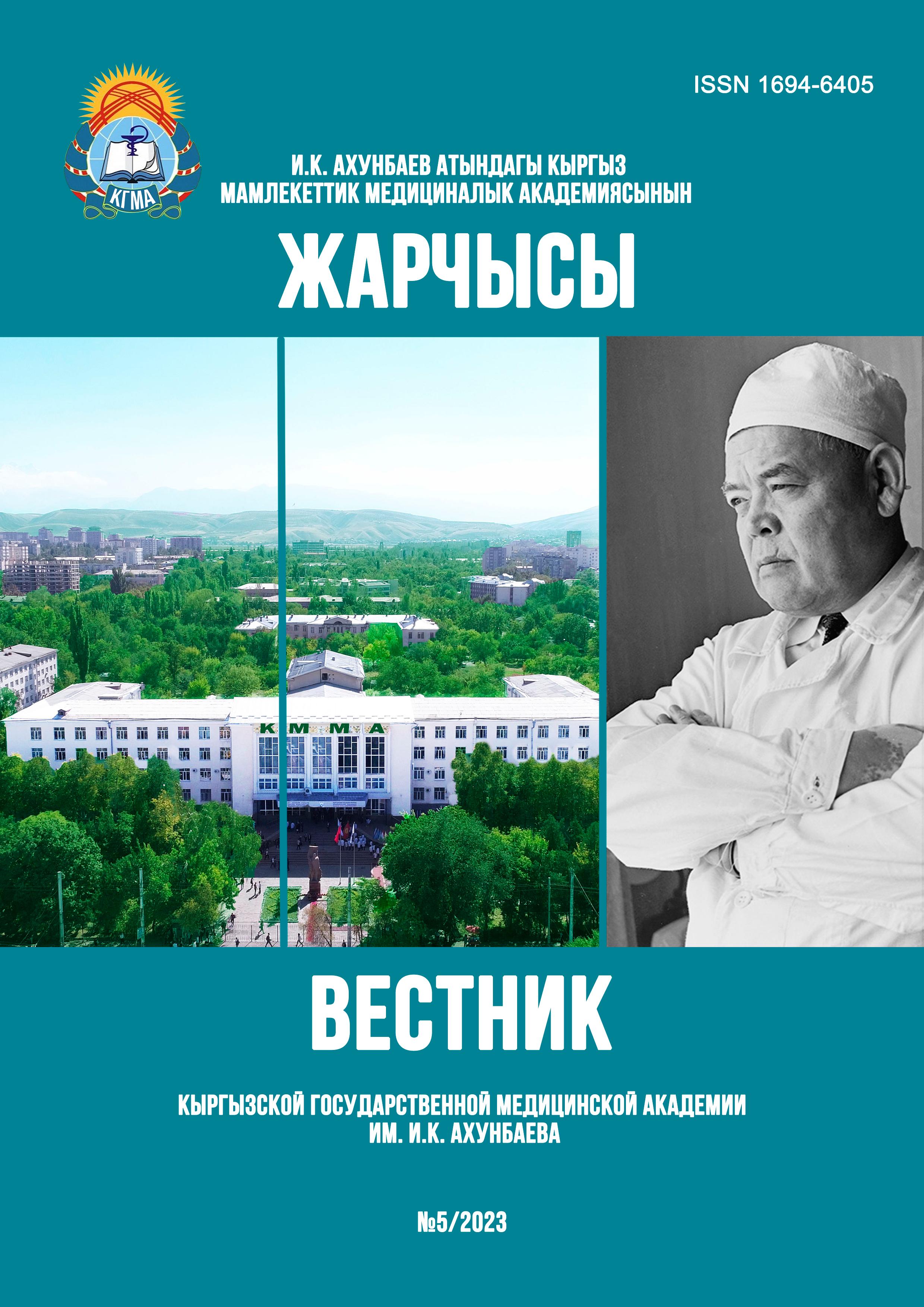ANALYSIS OF RISK FACTORS FOR HEADACHE IN VESTIBULAR SCHWANNOMA
DOI:
https://doi.org/10.54890/1694-6405_2023_5_159Abstract
The purpose of the work. To study the effect of the disease and treatment on headache in patients with vestibular schwannoma and to identify clinical predictors of long-term disability in headache.
Methods. A cross-observational study was conducted. The cohort included patients with primary vestibular schwannoma < 3 cm and a separate group of individuals from the general population of the control group without tumors. The study included a survey using a questionnaire of disability due to headache, hospital anxiety, depression scale and a questionnaire of symptoms of vestibular schwannoma.
Results. The data of 538 patients with vestibular schwannoma were studied. The average age of patients was 65 years, 57% of patients were women, the average interval between treatment and examination was 7.7 years. Twenty-seven percent of patients underwent microneurosurgery, 29% - observation. Patients with vestibular schwannoma who were under observation were more than twice as likely to suffer from severe headache compared to 103 control subjects without vestibular schwannoma.
Conclusion. On average, almost 8 years after treatment, about half of patients with vestibular schwannoma experience headaches of varying frequency and severity. Patient-dependent factors, including age, gender, mental health, and pre-existing headache syndrome are the strongest predictor of prolonged severe disability in headache.
Keywords:
headache; pain syndrome; neurosurgery; cochlear nerve neurinoma; vestibular schwannoma; cerebellar-pontine angle; cephalgia.References
1. Babbage MJ, Feldman MB, O'Beirne GA, Macfarlane MR, Bird PA. Patterns of hearing loss following retrosigmoid excision of unilateral vestibular schwannoma. J Neurol Surg B Skull Base. 2013;74(3):166- 75. https://doi.org/10.1055/s-0033-1342921
2. Kohno M, Sora S, Sato H, Shinogami M, Yoneyama H. Clinical features of vestibular schwannomas in patients who experience hearing improvement after surgery. Neurosurg Rev. 2015;38(2):331-41. https://doi.org/10.1007/s10143-014-0599-6
3. Sass HCR, Miyazaki H, West N, Hansen S, Møller MN, Cayé-Thomasen P. Extended Retrolabyrinthine Approach: Results of Hearing Preservation Surgery Using a New System for Continuous Near Real-time Neuromonitoring in Patients With Growing Vestibular Schwannomas. Otol Neurotol. 2019;40(5S Suppl 1):S.72-S.79. https://doi.org/10.1097/MAO. 0000000000002216
4. Chovanec M, Zverina E, Profant O, Balogová Z, Kluh J, Syka J, et al. Does attempt at hearing preservation microsurgery of vestibular schwannoma affect postoperative tinnitus? Biomed Res Int. 2015;2015:783169. https://doi.org/10.1155/2015 /783169
5. Wang AC, Chinn SB, Than KD, A ArtsH, Telian SA, El-Kashlan HK, et al. Durability of hearing preservation after microsurgical treatment of vestibular schwannoma using the middle cranial fossa approach. J Neurosurg. 2013;119(1):131-8. https://doi.org/10.3171/2013.1.JNS1297
6. Carlson ML, Vivas EX, McCracken DJ, Sweeney AD, Neff BA, Shepard NT, et al.Congress of neurological surgeons systematic review and evidence-based guidelines on hearing preservation outcomes in patients with sporadic vestibular schwannomas. Neurosurgery. 2018;82:E35-9. https://doi.org/10.1093/neuros /nyx511
7. Coughlin AR, Willman TJ, Gubbels SP. Systematic review of hearing preservation after radiotherapy for vestibular schwannoma. Otol Neurotol. 2018;39:273-83. https://doi.org/10.1097/MAO.0000000000001672
8. Reznitsky M, Caye-Thomasen P. Systematic review of hearing preservation in observed vestibular schwannoma. J Neurol Surg B Skull Base. 2019;80:165-8. https://doi.org/10.1055/s-0039-1679894
9. Ahsan SF, Huq F, Seidman M, Taylor A. Long-term hearing preservation after resection of vestibular schwannoma: A systematic review and meta-analysis. Otol Neurotol. 2017;38:1505-11. https://doi.org/10.1097/MAO.0000000000001560
10. Scheller C, Wienke A, Tatagiba M, Gharabaghi A, Ramina KF, Ganslandt O, et al. Prophylactic nimodipine treatment for cochlear and facial nerve preservation after vestibular schwannoma surgery: a randomized multicenter Phase III trial. J Neurosurg. 2016;124(3):657-64. https://doi.org/10.3171/2015.1.JNS142001
11. Blakeley JO, Ye X, Duda DG, Halpin CF, Bergner AL, Muzikansky A, et al. Efficacy and biomarker study of bevacizumab for hearing loss resulting from neurofibromatosis type 2-associated vestibular schwannomas. J Clin Oncol. 2016;34(14):1669-75. https://doi.org/10.1200/JCO.2015.64.3817
12. Snapp HA, Ausili SA. Hearing with one ear: Consequences and treatments for profound unilateral hearing loss. J Clin Med. 2020;9(4):1010. https://doi.org /10.3390/jcm9041010
13. Hawley ML, Litovsky RY, Culling JF. The benefit of binaural hearing in a cocktail party: Effect of location and type of interferer. J Acoust Soc Am. 2004;115(2):833-43. https://doi.org/10.1121/1.1639908
14. Kumpik DP, King AJ. A review of the effects of unilateral hearing loss on spatial hearing. Hear Res 2019;372:17-28.https://doi.org/10.1016/j.heares.201808.003
15. Agterberg MJ, Hol MK, Van Wanrooij MM, Van Opstal AJ, Snik FM. Single-sided deafness and directional hearing: Contribution of spectral cues and high-frequency hearing loss in the hearing ear. Front Neurosci 2014;8:188. https://doi.org/10.3389/fnins.2014.00188
16. Zeitler DM, Dorman MF. Cochlear Implantation for Single-Sided Deafness: A New Treatment Paradigm. J Neurol Surg B Skull Base. 2019;80(2):178-186. https://doi.org/10.1055/s-0038-1677482
17. Galvin JJ 3rd, Fu QJ, Wilkinson EP, Mills D, Hagan SC, Lupo JE, et al. Benefits of cochlear implantation for single-sided deafness: Data from the house clinic-university of Southern California-University of California, Los Angeles Clinical Trial. Ear Hear. 2019;40(4):766-81. https://doi.org/10.1097/AUD.0000000000000671
18. Härkönen K, Kivekäs I, Rautiainen M, Kotti V, Sivonen V, Vasama JP. Single-Sided Deafness: The Effect of Cochlear Implantation on Quality of Life, Quality of Hearing, and Working Performance. ORL J Otorhinolaryngol Relat Spec. 2015;77(6):339-345. https://doi.org/10.1159/000439176
19. Bartindale MR, Tadokoro KS, Kircher ML. Cochlear Implantation in Sporadic Vestibular Schwannoma: A Systematic Literature Review. J Neurol Surg B Skull Base. 2019;80(6):632-639. https://doi.org/10.1055/s-0038-1676768
20. Klenzner T, Glaas M, Volpert S, Jansen N, Kristin J, Schipper J. Cochlear Implantation in Patients With Single-sided Deafness After the Translabyrinthine Resection of the Vestibular Schwannoma-Presented at the Annual Meeting of ADANO 2016 in Berlin. Otol Neurotol. 2019;40(4):e461-e466.https://doi.org/ 10.1097/MAO.0000000000002181
21. Drusin MA, Lubor B, Losenegger T, Selesnick S. Trends in hearing rehabilitation use among vestibular schwannoma patients. Laryngoscope. 2020;130(6):1558-1564. https://doi.org/10.1002/lary.28316
22. Yang J, Wang Z, Huang M, Chai Y, Jia H, Wu Y, et al. Bone Bridge implantation in patients with single-sided deafness resulting from vestibular schwannoma resection: Objective and subjective benefit evaluations. Acta Otolaryngol 2018;138(10):877-85. https://doi.org/10.1080/00016489.2018.1469789







